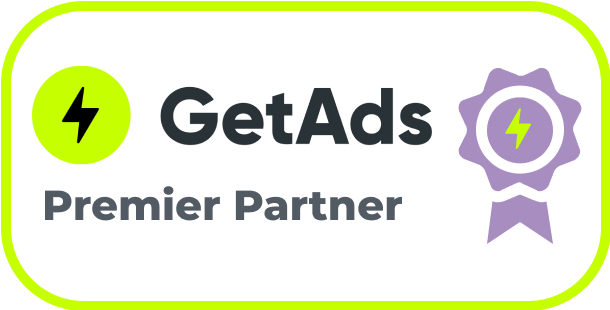B2B SaaS marketing can be tricky. You are competing with many other businesses in your chosen industry to try and get the attention of potential customers. So, how do you make sure that people notice YOU? It’s all about understanding what makes B2B SaaS companies successful and incorporating these strategies into your own business.
What is B2B marketing?
When you think of a business, what comes to mind? Of course, you might imagine the office space where they work, their logo and maybe even some pictures from professional headshots. But when we talk about B2B Saas Marketing in this context, it covers so much more than that!
It’s all about understanding your audience and how best to communicate with them without being too pushy or spamming them with mails and texts or even cold calling. Marketing is just knowing who these people are and having a clear idea of what will appeal to them.
This may sound easy, but executing a successful B2B strategy can be quite difficult – especially if you’re a starter to the world of digital marketing. That’s why we’ve created this ultimate guide for anyone looking at making an impact online as part of their B-to-B strategy.
What is B2B SaaS marketing?
Marketing software to businesses is a bit different from selling retail products. For one thing, it’s going to be more expensive – most business owners aren’t just going to fork out any amount for marketing software that they could get on the high street!
So, you’ll need a really good reason why someone should buy your product over all of the others in your industry, and what makes yours so special? This can be quite challenging, but everything else will fall into place much easier once you have this figured out.
Key Principles of Successful Businesses
- Who is your target audience?/ Buyer personas
To be successful, you need to know exactly who it is that you’re trying to impress and what they want from a business like yours. For example, are they looking for the cheapest option or something with a cutting-edge design?
Once you’ve taken these questions (and any others that occur as part of your analysis), then you’ll have a much clearer idea about how best to communicate with them online. You might even find some opportunities within this information – maybe there’s an untapped market out there just waiting for someone like YOU!
If so, can you reach them in ways other companies aren’t currently doing so successfully? Sometimes being different can be the best way to stand out from your competition. Whatever you discover, make sure that it plays a part in shaping your B-to-B strategy moving forward!
- What are their challenges?
It would help to consider what problems they might have and how they relate to your business offering. For example, if you’re an accounting software company, there’s something within this information about cash flow or invoice payments that will help them grow their business.
It’s worth considering whether any of these issues require immediate attention, too – sometimes prospects need assistance straight away before things get worse (or someone else beats you to the solution).
If so, is there anything more you can do for them today? Asking questions like this early on will help you determine whether they are (or will soon be) actual customers or just casual visitors looking around for now.
- Why are people applying to this sort of process?
If you’re providing a solution to your prospects’ problems, then it’s likely they’ll be looking for ways to solve them, which means that the internet is bound to be their first port of call.
Search engines are very spruce these days and will provide plenty of options based on what people put into search bars (just like this one!) It might also mean having an active presence on social media platforms too – look at how many Facebook posts there are every day!
It is advised to do some research now about which ones would suit your audience best? Remember that someone who has gone out of their way to find information online probably won’t mind scrolling through endless pages in return if yours contains something useful or interesting enough.
- What does your competitor’s marketing look like?
It’s also important that you consider what your competitors are doing online and how this works out for them. For example, you may find that they’re already reaching the people who would use their services, but it could also be true that there are some missing opportunities which you can capitalize on yourself!
Either way, make sure to take notes about anything related to B2B success, so you have a record of what has worked well in the past – these lessons will come in handy as part of your strategy moving forward.
Now let’s go over some strategies to follow:
- Keep your audience in mind.
Who are you targeting? What do they want and need from a service like yours, and how can you be the first to show the value of what you offer?
- Define your messaging
Explain why people choose your business over competitors with strong content that tells them about who you’re trying to help (and avoid fluffy marketing language).
Make sure it’s clear, concise and explains exactly what makes working with you or buying into your offering such an attractive prospect. It has to be easy for someone new to come across this information quickly – so make sure using keywords where appropriate is something else on which we’ve focused! When writing blog posts, keep things relevant – create content around industry news whenever possible.
- Do you know the “if you build it, they will come” mentality?
If customers can’t find what you’re offering or information about your brand is hidden away on a site with no SEO optimization, there’s no way to get the word out and grow as fast as possible.
So make sure your website is optimized from day one, so potential customers have multiple ways of finding YOU easily (the most important being search engines).
- Build a content marketing plan
Content marketing works best when combined with social media campaigns
Create great pieces around topics relevant to professionals within an industry and those looking into working in a similar field.
This is where you can use hashtags, keywords and other techniques to attract as much attention as possible – make sure your business accounts are consistent with the kind of content being shared across them all too!
- Create those social media campaigns
Introduce people to your brand before they’re ready for buying by sharing great industry news stories you find online, or create free resources that will be valuable in their work (which could lead to an email list).
- Make sure your website is designed to turn visitors into customers
Make the process of purchasing as easy and painless for people coming from social media campaigns (or search engines) who go on to buy something. Of course, the user journey must work in different situations, too – whether they’re looking for information or ready to buy right away.
- Build an engaging site
So you need a great site that encourages return visits, regular newsletter signups and other ways potential customers might get in touch with you after their initial visit. That way, when someone thinks, “I wonder what X could do for me?” you’ll be top of their mind.
- Keep track of what’s working and what isn’t!
Go back over previous blog posts to see which pieces attracted the most shares – this will keep you aware of where your target audience spends time online so you can continue reaching them. Make sure analytics are set up for each social media channel and any website landing pages mentioning specific offers or calls-to-action etc., so you know how effective they are at bringing traffic in!
You might even want these tracking tools installed on emails sent directly from your business accounts. Of course, it all depends on why someone buys into your offering after finding it through a campaign (and whether that’s via search engines) but always make sure A/B testing is on your mind.
Use these strategies whenever it’s appropriate, so potential customers know who you are without feeling pushed towards making a purchase yet – this way, turning up when they might need what you have on offer isn’t going to seem like such a bad idea. You may not believe at first how powerful some of these techniques can be, so it’s worth learning all you can think about them!
Conclusion:
We started this post off by pointing out how difficult some of those strategies might be – but don’t let that scare you away from B2B Saas Marketing!
It’s a lot of work, granted, but the results for businesses adopting these practices can speak for themselves. Think about what each piece has done so far – and keep going with it until one day, every single person on earth is aware of who YOU are. That will take time, no doubt, so remember blogging isn’t something you should drop any time soon, even if things go well! And lastly, always have fun doing it.
You can catch up with Fantom agency for your business’s brand growth and everything else by contacting us.







